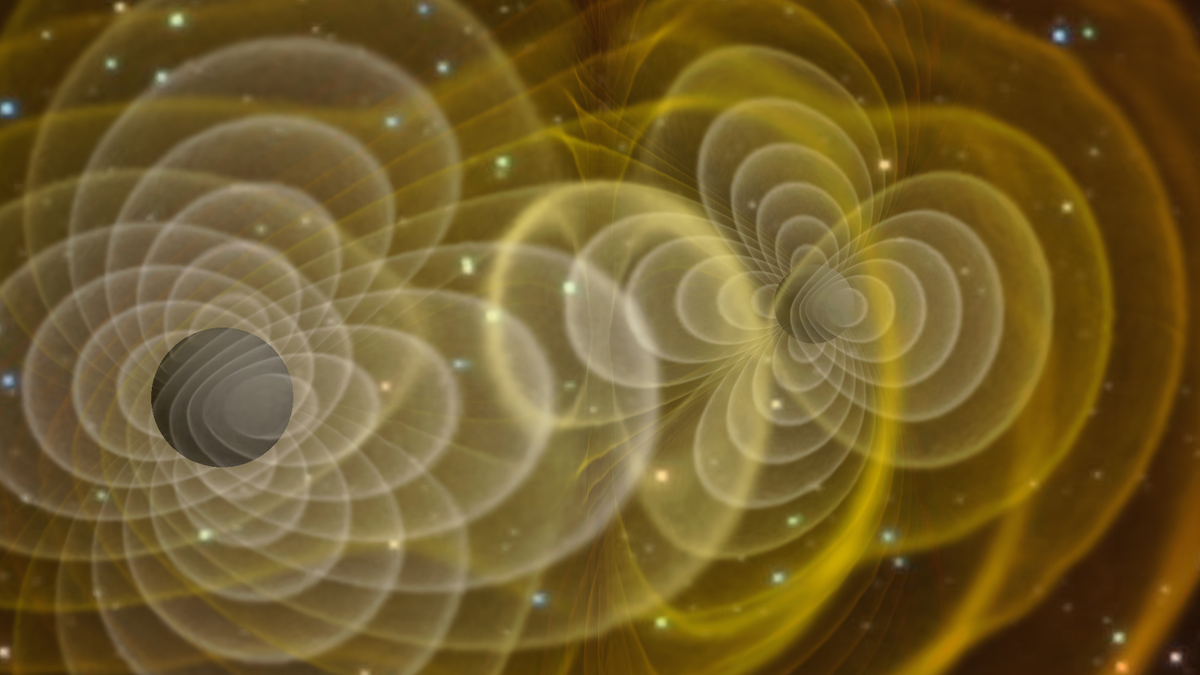The complex pattern of gravitational waves emitted by a pair of black holes circling each other before merging.
| Photo Credit: Henze/NASA
Scientists working with a network of observatories located around the world recently reported that they had detected a powerful and unusual burst of gravitational waves, which they called GW231123. The signal was traced back to two black holes colliding into each other on November 23, 2023.
This isn’t the first time the observatories have detected gravitational waves, but the event is special because of the extraordinary size of the black holes involved: they are much heavier than most seen before. More interesting is the fact that the heavier black hole appeared to have a “forbidden” mass — a value inside a range called the pair instability mass gap — which challenges what physicists thought was possible for black holes created from dying stars.
Imagine a massive star at the end of its life. Usually, very heavy stars explode in supernovae, leaving behind black holes. But theory predicts that no black holes should form with masses between about 60 and 130 times the mass of our sun. This is the pair instability mass gap: it’s thought to exist because stars this large explode so violently that nothing remains, not even a black hole, just scattered gas.
Above 130 solar masses, stars may skip the explosion and directly collapse to create supermassive black holes.
So finding black holes in the mass gap raises important questions about how they got there.
On November 23, 2023, the two Laser Interferometer Gravitational-wave Observatories (LIGO) in the U.S. detected a burst of gravitational waves, faint ripples in spacetime created by massive objects accelerating and colliding. The GW231123 event lasted only about one-tenth of a second and the signal was strong and clear. The collision happened about 2 billion lightyears away.
Scientists at the LIGO as well as Virgo and KAGRA observatories in Italy and Japan, respectively, conducted a detailed analysis and determined the pre-merger mass of the two colliding black holes. The heavier one had 120-159 solar masses but likely centred at 137 solar masses. The lighter one weighed 51-123 solar masses but likely centred at 103 solar masses. The total mass involved in the collision was thus likely 190-265 solar masses, rendering GW231123 the most massive black hole merger ever seen with high confidence.
The mass of the heavier black hole in the merger is right inside, or just above, the pair instability mass gap. The mass of the lighter one could also be in or near the gap, given the large uncertainty. According to theory, stars can’t leave behind black holes in this range, so the scientists figure something else must be going on.
They are already considering several explanations. One, for example, is called a hierarchical merger: smaller black holes could merge inside dense star clusters, then the resulting larger black holes merge again, building up over time and ending up inside the gap. This possibility finds some support from the fact that both black holes were spinning rapidly. Usually, black holes formed from individual stars aren’t spinning this fast.
Another possibility is a stellar merger. Sometimes, two stars might merge before they die, creating a much larger star that might collapse to form a black hole whose mass lands inside the gap. It’s also possible these two black holes formed right after the Big Bang, by a process unrelated to stars, although this idea is in the realm of speculation. Yet other potential explanations include some stars losing less mass before exploding or hitherto entirely unknown processes.
The main idea is that the detection of GW231123 suggests the universe can make black holes in the mass gap after all, and not just through the collapse of single stars. And that this fact means scientists’ theories about the lives and deaths of massive stars need updating.
Published – July 18, 2025 09:19 am IST
